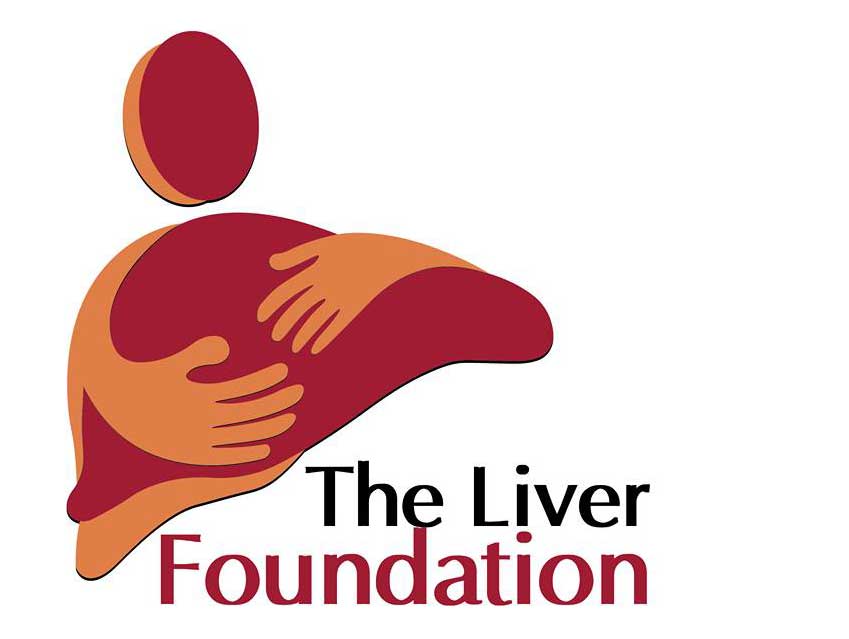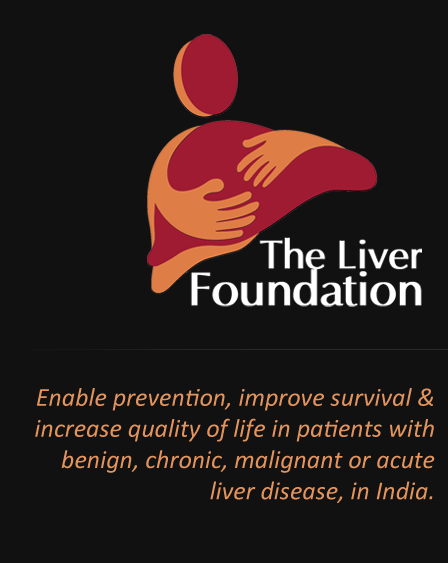Liver Disease: Magnitude & Scope For Treatment
There are several reasons for starting a foundation that seeks to improve the lives of people with liver diseases in India.Some interesting information about this group of diseases is highlighted below for the reader to understand the magnitude of the problem and scope for treatment.
VIRAL HEPATITIS
Disease burden and sero-prevalence. HBV and HCV together are estimated to have led to 500 million chronically infected persons and one million deaths annually. In the South-East Asia region, the estimated burden of chronic HBV infection is 100 million and the estimated burden of chronic HCV infections in South Asia is 50 million.
HBV
Hepatitis B is responsible for 1.4 million deaths every year (compared to 1.5 million deaths from HIV/AIDS and 1.2 million from each of malaria and TB). Nearly two billion people in the world have been acutely infected by HBV and there are nearly 350 million people chronically infected with HBV.
At least 15-25% of chronically HBV infected people will die due to liver disease caused by HBV and this constitutes nearly one million people each year.
HBV is the second most common cause of acute viral hepatitis after HEV in India. With 3.7% point prevalence, India has over 40 million hepatitis B infected patients (second only to China) and constitutes about 15% of the entire pool of hepatitis B in the world. Every year, 1million Indians are at risk for HBV and about 100,000 die from HBV infection. Tribal areas in India have high prevalence of hepatitis B. Every year, nearly 600,000 patients die from HBV infection in the Indian continent. Chronic Hepatitis B infection accounts for about 30% of liver cirrhosis and 40-50% of liver cancers in India.
Despite the huge problem, the UIP (vaccination coverage) is only 34% for birth dose coverage as per national estimates. There is thus a huge gap and lot of concerted effort is needed. In this perspective, the HBV epidemiology in India becomes relevant not only nationally, but also internationally, because of the possibility that India may soon have the largest HBV infection pool in the world.
Hepatitis C.
Population prevalence of chronic HCV infection in India is around 1 %. Approximately 12 million people have chronic hepatitis C infection.
Chronic HCV infection account for 12-32% of liver cancer and 10-20% cases of cirrhosis in India. Most people with chronic hepatitis B or C are unaware of their infection and are at serious risk of developing cirrhosis or liver cancer.
Hepatitis A virus [HAV] is responsible for 10-30% of acute hepatitis and 5-15% of acute liver failure cases in India. There is a vaccine available for HAV.
HEV is responsible for 10-40% of acute hepatitis and 15-45% of acute liver failure in India. Acute HEV has inordinately high mortality rate of 15 to 25 percent in women in the third trimester.
Various experts discussed the gaps, challenges and priorities as regards to Prevention, Screening, Care and Treatment of Viral Hepatitis in India. The conference identified the following priority areas1) Need to generate data on the magnitude of the burden of liver disease especially Viral Hepatitis in India 2) Identify high risk and priority population 3) Improve coverage birth dose vaccination as well as all dose coverage of HBV vaccine 4) Improve Injection safety and spread knowledge of safe injection among health care workers 5) Screening of High risk groups 6) Improving the access to treatment and availability as well as affordability of the drugs for HBV and HCV 7) Improve sanitation and safe drinking water for prevention of HAV and HEV 8) Vaccination HAV in the selected group 9) Vaccination for HEV may be available soon
Most patients and many health care providers assume that as viral hepatitis is a group of infective diseases, its treatment is through medicines only. BUT THIS IS A MODERN MYTH. Viral hepatitis (VH) is liver inflammation or even failure, due to liver centered viruses like hepatitis virus A, B, C and E. Knowledge about this group of diseases is crucial to all of us due to the staggering number of people affected with these diseases in our country. About 12 million people in India may be chronically infected with hepatitis C alone and most are unaware. Although the overall figure of prevalence countrywide stands at around 2-2.5%, in some parts of India up to 22% of people were found to be positive for hepatitis C, 70% of them adults. On the other hand over 40 million people have been infected with the Hepatitis B. In the WHO South-East Asia Region more than 400,000 people are estimated to die each year due to cirrhosis and liver cancer associated with VH, at least 30% of who are Indians. Unfortunately unlike in the west where a few i.v drug abusers are affected, in our country the shocking reality is that hepatitis B & C infections was equally spread through blood transfusions, unsafe therapeutic injections, and healthcare-related procedures as well as unprotected sex etc.
Whilst it is true that many patients with VH only require medicines for their treatment, there is significant proportion of people who require surgery for long-term survival. They fall into 3 groups. The 1st is liver cancer patients. The 2ndgroup is acute liver failure patients. The 3rdgroupof patients with VH who require surgery are the cirrhosis patients. Cirrhosis or end stage liver disease is by far the commonest, less sudden, but equally dangerous manifestation of viral hepatitis. Approximately 2-3 % of hepatitis B and 15-20 % f Hepatitis C patients will develop liver cirrhosis. Given the disease burden of hepatitis B and C in the country it is estimated that approximately 10,000 patients every year reach the final stage of chronic liver disease (end stage liver disease), requiring liver transplantation due to viral hepatitis alone. For such patients medicines and injections offer a miserable quality of life and simply postpone death. Again liver transplantation surgery is the only hope of cure and long-term survival. What is more, transplantation completes changes the lives of these patients, who often are able to return to their normal work and activity, a concept that would have been impossible before transplant surgery.
Experts:
In many countries of this region, particularly China and Taiwan, an effective immunization programme is changing the epidemiological situation very fast with decrease in the prevalence, incidence as well as impact of HBV infection.
Amongst the mode of transmission of the virus, a very important mode would be the unsafe injection practice prevailing in the vast rural areas of the country.
REVIEW ARTICLE
Year : 2004 | Volume : 1 | Issue : 1 | Page : 17-24
Epidemiology of hepatitis B virus infection in India
Abhijit Chowdhury; Department of Gastroenterology, Institute of Post Graduate Medical Education & Research, Kolkata 700020, West Bengal, India
Liver cirrhosis mortality in 187 countries between 1980 and 2010: a systematic analysis
Ali A Mokdad12*, Alan D Lopez3
By contrast, preventive measures such as screening transfused blood for viral hepatitis, employing appropriate medical hygiene in health facilities, introducing hepatitis B vaccination programs, imposing alcohol trade restrictions and raising taxes on alcohol, implementing health promotion and education programs to reduce alcohol consumption and harmful alcohol use are relatively inexpensive and cost-effective. In 1991, the WHO undertook a global effort to incorporate hepatitis B vaccination into routine national immunization schedules.
A real increase in the age-standardized liver cirrhosis mortality rate in the UK is apparent, and was likely driven by an increase in alcohol consumption and a shift to a higher proportion of alcohol intake in the form of spirits and binge drinking outside of meals [25],[63],[64]. Rising hepatitis C prevalence and a growing obesity epidemic in the UK have likely also played a role in increasing the liver cirrhosis burden over the past two decades [34],[68],[69].
South Asia, particularly India, is another region where priority attention to improve prevention and control of liver cirrhosis risk factors is needed, with almost one-fifth (18.3%) of global liver cirrhosis deaths in 2010 occurring in India alone. Cirrhosis mortality has been steadily increasing in India since 1980, as has alcohol consumption, prevalence of hepatitis B and C and diabetes (a major risk factor for nonalcoholic fatty liver disease (NAFLD)) [34]. This contrasts with reductions in liver cirrhosis mortality in China.
Liver cirrhosis deaths worldwide have increased steadily over the past 30 years, exceeding one million in 2010, or approximately 2% of all deaths in that year. In 2010, there were an estimated 188,575 (109,748 to 303,989) liver cirrhosis deaths in India, accounting for almost one-fifth (18.3%) of the global liver cirrhosis death toll. Global liver cirrhosis deaths increased monotonically from just over 676,000 (676,079:95% uncertainty interval: 452,863 to 1,004,530) deaths in 1980, or 1.54% of global deaths, to more than one million (1,029,042: 670,216 to 1,554,530) deaths in 2010, or 1.95% of the global total (Table 3, Figure 3).
ACUTE LIVER FAILURE
Sudden or acute liver failure (ALF) is a clinical condition resulting from severe impairment of liver function secondary to massive liver cell death. It presents as the final stage of acute hepatitis, when the function of the liver has almost completely been destroyed by disease. ALF can be due to various causes (viral, toxic, metabolic-drugs etc.) which differ from one geographical location to another. Whereas drug induced ALF is more common in the west, viral hepatitis is the commonest cause of ALF in India. Among the hepatitis viruses, Hepatitis E virus (23-56.5%) is probably the commonest cause of ALF in adults in India followed by Hepatitis A and B viruses. In children, HAV is the commonest cause (10-71%). Drug induced ALF constitutes about 4-6% of cases in India.
Unlike dialysis for kidney failure, there are no machines that can carry on the function of the liver when it fails. Therefore the only option for patients in severe liver failure is liver transplantation surgery. The outcome of patients with ALF remains very poor in developing countries with high mortality (death rate). The accurate incidence (cases per year) of ALF in India is not known. The average incidence of ALF in the west is about 8-10 per year per million population and there are approximately 50-60 transplants being done annually for ALF in the UK (60 million population). Therefore even accounting for differences in disease rates and race, if we extrapolate these western data, we estimate that there are at least 7-12,000 patients who suffer ALF every year in India of whom approximately 1200 -2000 patients are severe enough to die without liver transplantation. In other words about 4-5 people die needlessly from this disease everyday!
So establishing programmes that places emphasis on the care of such patients is crucial if we are to save the lives of such patients.
We are so passionate about ALF is because of 3 reasons. One, it affects young people(average age 20-40 yrs) in the prime of their lives and two, it strikes people who are previously fit and well, sometimes until even a day previously. Three, although the chances of death are about 80% without the correct treatment, 80% can survive with the right medical care including transplantation. So the statistics are completely turned around by appropriate transplantation. However currently diagnosis of this condition is frequently delayed and death occurs before diagnosis and referral. Jaundice (yellow eyes) followed by drowsiness or confusion are the cardinal signs of such a disease. Recovery from acute liver failure with supportive medical therapy can and does occur, but only in a minority of patients. Liver transplantation remains the last resort as we would routinely try our best to overcome the illness with careful ITU care. As mentioned above due to a collection of reasons including delays in diagnosis, lack of specialist services, perception of poor outcome after transplantation and the limited availability of a transplantation service has meant that ALF remains poorly looked after. TLF wishes to bring about a change and invite everyone with similar ideals to link up and attempt the impossible.
Liver Cancer
Liver cancer or hepatic cancer is a cancer that originates in the liver and is the fifth most frequently diagnosed cancer globally and the second leading cause of cancer death. Liver cancers are malignant tumors that grow on the surface or inside the liver. They are formed from either the liver itself or from structures within the liver, including blood vessels or the bile duct. Cancers that spreads to the liver from another organ (such as bowel or breast) are known as secondary or metastatic liver cancers. There is no one cause of primary liver cancer. Several factors increase a person’s likelihood of developing liver cancer such as:
- Viral Hepatitis: Hepatitis B virus (HBV) and Hepatitis C (HCV) virus infections are an important factor for the development of liver cancer. With chronic Hepatitis B, patients can develop HCC even before they develop cirrhosis and their relative risk of HCC is 100-fold higher compared to the normal population. Estimates show that about 5 to 10 per cent people with HBV or HCV will develop liver cancer.
- Cirrhosis. Around five to ten per cent of patients with cirrhosis develop liver cancer.
- Obesity & Diabetes could also increase the risk of liver cancer, especially in those who drink heavily or have chronic viral Hepatitis B or C infection.
Liver cancer has no obvious symptoms and people at risk should be monitored regularly to detect the cancer at an early stage. Most symptoms that might help detect liver cancer e.g. unexplained weight loss, persistent abdominal pain and sudden jaundice are late findings when often it is too late for surgery. Therefore liver cancer screening is the best way to detect the cancer early in its course when it does not produce much symptoms. It is advised that patients who have a liver disease that puts them at a high risk of developing liver cancer should undergo periodic screening tests. The liver cancer screening involves simple blood tests and in expensive ultrasound scan of the liver to look for the actual cancer.
While there are many ways of treating liver cancer like cryosurgery, radiofrequency ablation, chemotherapy, radiation therapy, sorafenib (oral medication used in advanced cases of liver cancer), surgery is the most effective therapy for most types of liver cancer and surgical removal is the only treatment that can deliver cure whilst other modalities mostly only increase survival by months. When the cancer cannot be cured by surgery, doctors may suggest a liver transplantation in which the cancer along with the entire liver is replaced thus curing the patient. BUT even such basic information is not known to many patients and increasing awareness of such data is crucial to improving the outcomes from such cancers. This again is something that TLF hopes to get involved in, in the next few years. Major surgery in cirrhotics is a complex undertaking, which must be performed in centers with experience in managing liver failure. However many such centers now exist in our country and these facts need to become common knowledge. Other liver cancers especially cholangiocarcinoma, is a further area of interest for the trust as again this is a disease that is badly looked after in our country with almost 70-80% curable people dying needlessly.
Worldwide the most common causes of cancer death arelung cancer (1.38 million, 18.2% of the total), stomach cancer (738,000 deaths, 9.7%) and liver cancer (696,000 deaths, 9.2%).
Worldwide liver cancer is the fifth most frequently diagnosed cancer worldwide but the second most frequent cause of cancer death. The highest liver cancer rates are found in East and South-East Asia and in Middle and Western Africa,
January-March 2014 Volume 3, Issue 1
Quarterly Newsletter from the National Centre for Disease Control (NCDC)
Non Alcoholic Fatty Liver Disease
Recent studies confirm that liver transplantation(LT) for fatty liver now represents the fourth most common reason for LT in the USA. Furthermore, the trajectory indicates that it will soon become the leading indication for LT worldwide!! Recent community-based studies from Asian countries, including Japan, China, and India, indicate that the overall NAFLD prevalence reaches as high as 45%!! These findings are echoed in patients transplanted in our unit last year. In our series of over 300 transplant recipients, there has been a year on year increase in transplants for NAFLD, which reached a new high last year with over 30% of our transplants being due to NAFLD in 2013. The tragedy of the situation is that this is an entirely preventable disease. Provided precautions are taken at the right stage, the disease progression to cirrhosis can be checked. Fatty liver disease is preventable and in the initial stages just needs dietary modification. Obviously the second liver disease that can be easily prevented is alcohol related liver injury!
However this information has to reach the public. Again TLF hopes to spread such information to all relevant populations at a time when liver disease can be prevented.
Chronic Liver Disease
Chronic liver disease or ‘Cirrhosis’ is a progressive disorder that leads to scarring of the liver. Cirrhosis is the end result of all forms of long standing liver damage. Cirrhosis is caused by Hepatitis B and Hepatitis C, alcohol abuse, fatty liver and certain genetic disorders. Around five to ten per cent of patients with cirrhosis develop liver cancer. As mentioned above India is home to 11 per cent of the world’s patients affected with chronic Hepatitis B and the number of deaths from liver cancer or cirrhosis each year range between 100,000 and 200,000. It is estimated that about two lakh people are diagnosed with end stage liver disease each year and about 0.02 per cent of the population (25000) need liver transplants every year. Yet we perform less than a 1000 a year! One of the reasons for this is organ shortage.


